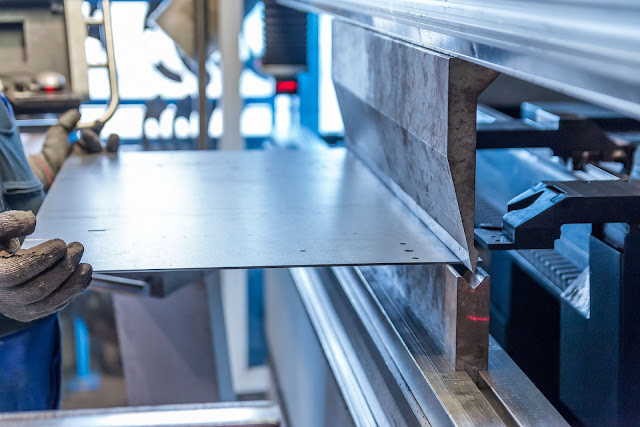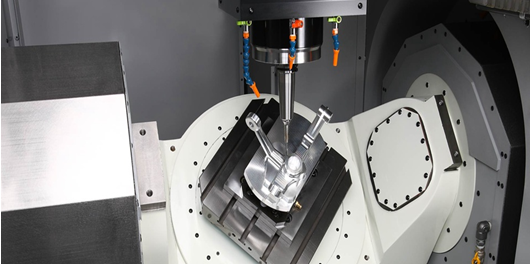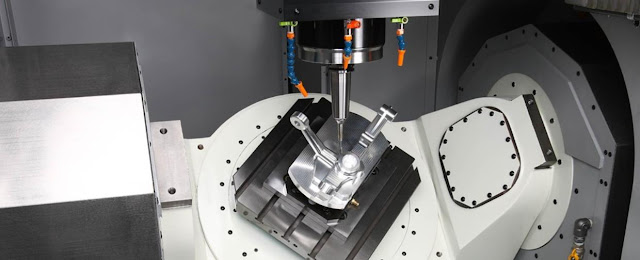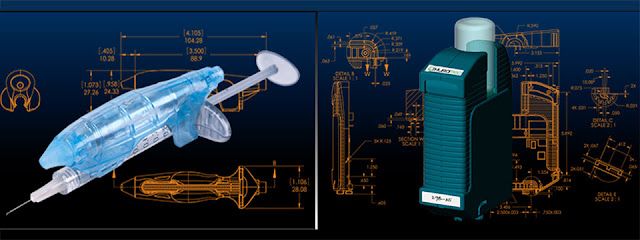Plastic machining services
Plastic as an
industrial material has first appeared in our lives in the 1800s, when first
Industrial Revolutions began to happen. Due to its convenience, it has rapidly
spread and developed. Nowadays, we do not spend a single day without touching
or using something made of plastic. Same things can be said about designing or
manufacturing any product. You will definitely have parts that are made of
plastic. Some product prototypes are wholly machined from a solid piece of
plastic due to the fact that it is softer than metal and thus can be machined
faster. That is why it is really worth it to know some nuances about plastic
machining.
Plastics are
valued because they have a bunch of useful properties: they are very
lightweight, they are good insulators, they have a really good corrosion
resistance, good surface finish is easily obtainable with them. That is the
reason why they are so important in modern-day industry.
There are lots of different types of plastics and not all of them are
good for machining. The main parameter here is viscosity. The more viscous a
plastic is, the worse it is to machine it. It is quite logical if you think
about it. As the material gets heated by the friction from the cutting tool, it
gets even more viscous. As a result, cutting chips stick to the tool and cover
its sharp cutting edges. So, if you want a machined plastic part, first of all,
choose a harder type of plastic. Typically, all plastics are divided into three
groups:
1. Soft plastics (polyethylene, polypropylene). Those are the worst to be machined as they are soft and get stuck on the tool;
2.Hard plastics (ABS, Polycarbonate, PPSF). Machining them is easier since they produce harder chips that are easily deleted from the cutting area;
3.Reinforced plastics. (They are composite materials, basically) Those are the hardest and the strongest among others. They are better than soft plastics but worse than hard ones because they are usually reinforced by some abrasive particles which dull the cutting tool really fast
Another important factor when we talk about polymers is its thermal
expansion. It is 10 times that of a metal, which brings certain constrains in
machining processes. Plastics have bad heat conductivity too. And, to add to
the previous problems, they have a much lower melting temperature. All of that
leads to a possibility of melting your stock while trying to machine it. You
either have to use coolants and those are not always compatible with some
plastic types or you have to modify the process. Some ways to avoid thermal
expansion will be described later because they differ with the machining
process.
Polymers are usually milled on conventional metal
milling centres. However, there are some nuances due to the plastics
properties. They mostly concern fixtures and cutting tools. First of all,
fixtures have to be adapted to have a larger contact area with the material
since any plastic is much softer than metal and fixtures may leave considerable
dents in the stock. Now, the Cutting Tools also have some peculiarities. First of all, it
has to be much sharper than a conventional metal tool because plastics are much
softer and if the tool is dull, you will basically deform the surface rather
than cut it. Then, the tool has to be sharpened much more often because
abrasive particles used for reinforcing engineering plastics dull the
instrument that much faster than metals. You also have to use higher speeds
because of the viscosity and to prevent overheating, use smaller tool feeds.
That way chip size is smaller, as are cutting forces and friction. In some
cases, gaseous coolants can be used to carry the heat away.
Plastic turning
As it was with
milling, you can turn plastics on a conventional Lathe that was designed for
metal. The differences are all about the technological systems. First of all,
the cutter is quite different. If you look at metal cutters, they are more like
a sharpened block and that is understandable since cutting forces are large and
it has to withstand them and be very rigid. When we cut plastic, the situation
is different. The forces are much smaller and you have to make them so that the
stock does not bend under the influence of the tool, and so is the hardness of
the material. That is why the cutter has to be sharper and thinner. Plastic
cutters look much more like knives compared to metal cutters. The tool for
cutting the part off is different too. It has a sharp pointed edge in the
center, whereas metal cut-off tool was just broad there because it would have
broken right away otherwise. Now, as it was with the milling, cutting speeds
are much higher, again, because of viscosity and feeds are smaller due to low
heat conductivity and high thermal expansion. If you want to use a coolant,
best of all, use something neutral like compressed air because that way your
stock won’t form a chemical reaction with the oils in the coolant fluid.
Drilling
plastics can be a hassle due to the fact that heat generation happens inside
the stock and the contact area is much higher than when milling or turning. Internal
heating may lead to additional stresses inside the part which in turn may cause
warping and deformations. That is why in case of drilling, cooling is most
important. If you have a drill with internal cooling passages, it will greatly
ease the process. In any case, you should choose a drill with a thin bridge
(its diameter in the middle) and sharpen it because dull instrument increases
internal stress as well, a dull drill has an increased friction parameter as
well, which is bad for the process as it builds up more heat. It is recommended
to withdraw the drill as often as possible to cool it and to withdraw chip. It
is recommended to avoid manual feed because any instability in the process may
result in the drill being caught inside the stock and cracking it.
As you can see, machining plastic has a lot of nuances. And if you are
not well acquainted with manufacturing technology, it is recommended that you
use professional Plastic Machining Services which are numerous everywhere due to the
widespread use of plastic everywhere and the fact that they can be united with
metal machining.






Comments
Post a Comment